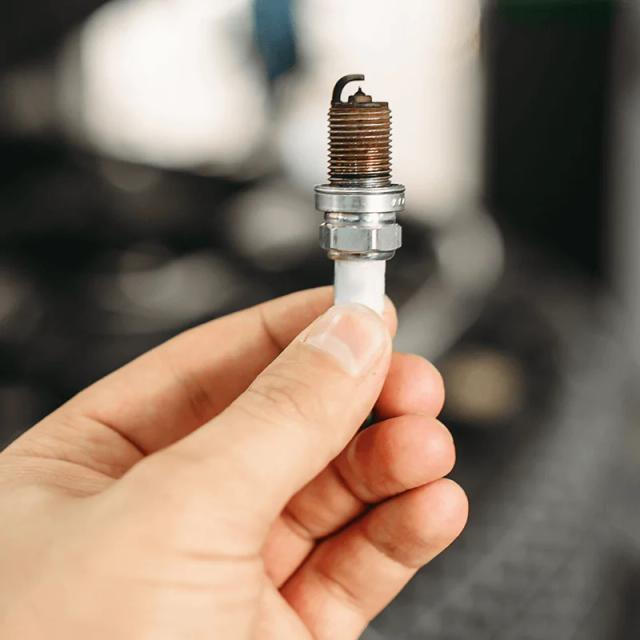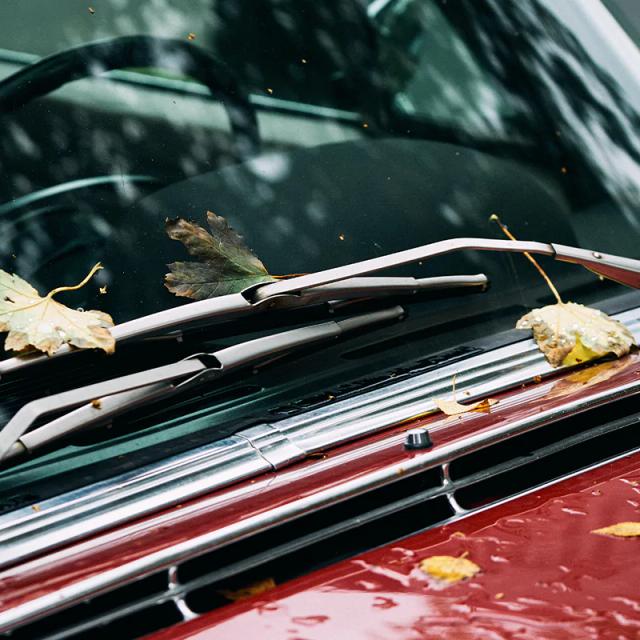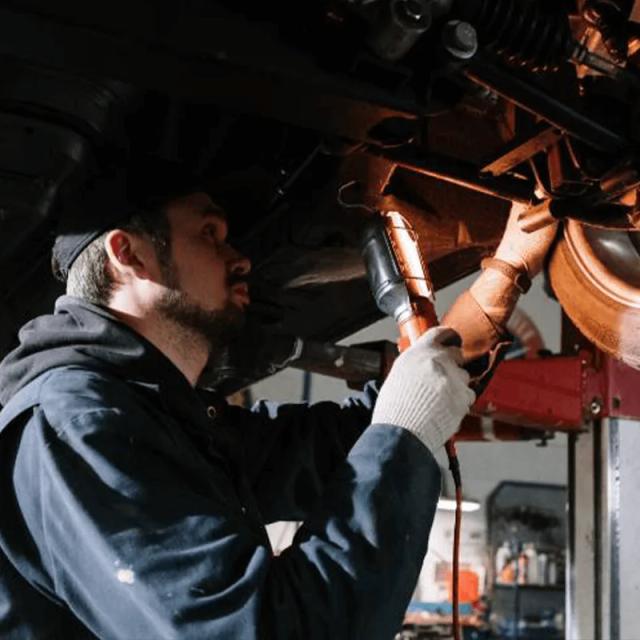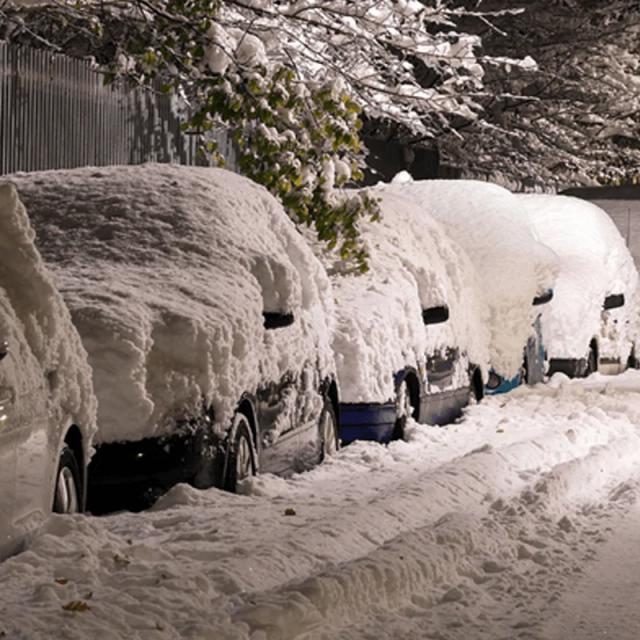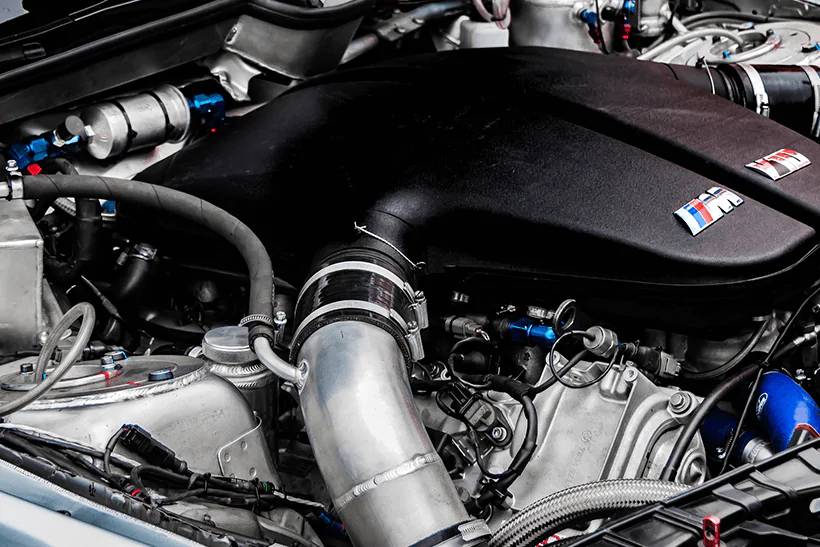
The fuel filter performs the crucial job of preventing any pollutants from getting inside the engine, keeping your vehicle running smoothly and ensuring optimum fuel efficiency. However, it can only do this if it's kept in good condition.
If you require a new fuel filter, just head to our fuel filter page, enter your reg or make and model and we’ll show you the correct ones for your car!
Changing the fuel filter is one of those basic maintenance jobs that all vehicles need from time to time. In this guide, we'll explain how the fuel filter works, how often it needs replacing, and how to change it. We'll cover:
What Does the Fuel Filter Do?
Types of Fuel Filter
5 Signs Your Fuel Filter Needs Replacing
How Often Should You Change a Fuel Filter?
How to Change a Fuel Filter - 15 Simple Steps
Fuel Filter Know-How
Please note that the advice in this guide refers to petrol filters only. The fuel systems in diesel cars are more complex, and the fuel lines are highly pressurised, so it's better to ask a professional for help.
What Does the Fuel Filter Do?
Modern car engines are made up of many delicate, high-spec parts and have a tight tolerance for contamination. That means they can be adversely affected by even the smallest amount of dust, rust, or dirt. If any of these pollutants get inside the fuel tank – say, during the re-filling process – then the fuel injectors and other delicate parts will quickly become damaged, meaning costly repairs for you.
So, what does the fuel filter do? The fuel filter works by filtering out any harmful contaminants before reaching the engine. This means that it's inevitable that pollutants build up in the filter over time, and the part is designed accordingly. However, if left for too long, the filter can become blocked or clogged and interfere with fuel flow into the engine.
Should the blockage become severe, the engine could struggle to generate enough power to get your car going, meaning the car won't start at all. So, it's vital that the fuel filter is checked regularly and, when necessary, changed or cleaned. The correct way to maintain your fuel filter will vary from vehicle to vehicle, so check your owner's manual to learn more about this.
When you’re ready to get a new fuel filter just enter your reg number or make and model in our fuel filter section and we’ll only show you the parts suitable for your car.
Types of Fuel Filter
There are several different fuel filter types, but the most common varieties are cartridge fuel filters and modern strainer-type fuel filters.
Cartridge Fuel Filters
Cartridge fuel filters are designed to be serviceable parts, meaning they don't last forever and need to be replaced every few years. The cartridge filter contains a particular type of porous filter paper or other fine material that is effective at catching tiny dirt or dust particles while still allowing fuel to pass through.
This type of fuel filter is usually located between the fuel tank and the injectors. In some models, the filter is accessible via the bonnet. In other vehicles, it can only be accessed underneath. Your car owner's manual or Haynes's manual can help you locate the filter on your car.
Strainer-Type Fuel Filters
Many newer cars don't use a replaceable filter cartridge and have a strainer-type fitted inside the tank or on the fuel pump. This isn't a serviceable part, so it's best to consult a professional if there's a problem with it.
5 Signs Your Fuel Filter Needs Replacing
It's normal for a replaceable fuel filter to become dirty over time; it's doing its job as it should. However, if the filter becomes so polluted that the fuel flow to the engine is disrupted, it can cause serious issues. So, it's essential you can recognise the signs of a blocked or clogged fuel filter.
If you have a blocked fuel filter on your hands, you might notice the following symptoms:
Difficulty Starting
While a dirty fuel filter won't completely stop your engine from turning over and starting, it might be difficult to turn over because the clogged fuel filter slows fuel to the engine.
Stalls While Running
If a blockage inside the filter partially disrupts the fuel supply to the engine, it might cause the engine to cut out while driving. This is because the blockage in the filter will prevent fuel from reaching the engine, causing the engine to stall. You can still start the car initially, as there's enough fuel inside the lines to get the engine going. However, once this is used up, the engine will fail.
Misfiring or Rough Idling
A clogged fuel filter causes low fuel pressure, leaving the engine starved of fuel and causing a misfire. You'll probably notice a warning light on the dash and the engine rough idling.
Poor Engine Performance
If your fuel filter is clogged, your engine won't be able to perform optimally. Leaving you with a vehicle that is sputtering at lower speeds and not being able to accelerate very quickly. The same goes for driving on hills. The engine must work harder to power the car up the slope, which requires more fuel. So, if you notice a lack of power when accelerating or driving up hills, a dirty fuel filter could be to blame.
Other Fuel Parts Failing
A dirty fuel filter stops the correct amount of fuel from reaching the engine. The fuel pump will try to compensate for a bad fuel filter, placing undue pressure on the pump and causing it to fail prematurely.
How Often Should You Change a Fuel Filter?
If your car has a replaceable fuel filter, it should be changed once every three years or 30,000 miles (whichever happens first). However, this can vary between different makes and models, so you should always check your car's owner's manual or Haynes guidebook.
It may also need changing earlier if you've noticed the symptoms of a blocked fuel filter. If you suspect a blockage, don't put off replacing the filter: a clogged filter will force the fuel pump to work overtime, making it more likely to wear down or break. And that would lead to much more extensive – and costly – repairs. So, constantly change the fuel filter at the first sign of trouble.
How to Change a Fuel Filter - 15 Simple Steps
Changing a fuel filter is a job that most amateur mechanics with a bit of automotive knowledge should be able to complete. However, you should be aware that while it's not an especially complicated job, it can be messy. So, we suggest wearing old clothing when carrying out these repairs.
Diesel Car fuel Filters
Please note that the following advice is intended for petrol vehicles with serviceable fuel filters only. Changing a fuel filter on a diesel car is much more complicated, and the pressure levels inside the lines can be very high, meaning it can cause injury if not handled correctly. Check your owner's manual or Haynes guide for more information about this.
To replace a petrol fuel filter you will need the following equipment:
A replacement fuel filter:
This needs to be the correct type for your car. You can check the make and model in the owner's book or use the product finder on our
to ensure you buy the correct parts.
Replacement fuel filter clips:
These small but essential fittings are usually made from plastic and may break while being removed, so it's a good idea to have some replacements on hand.
A bowl, bucket, or container:
This is to catch any fuel run-off during repairs. Be sure to choose one that can safely contain petrol.
Rags and newspaper:
For cleaning up spills and catching drips.
Assorted hand tools:
Including tweezers, pliers, wrenches, a socket set, and screwdrivers.
A
.
Eye protection and gloves.
Once you've got everything ready, you can suit up and get to work changing your fuel filter.
Step 1 - Depressurise the Fuel System
First, you need to disable the fuel pump in order to relieve the pressure inside the fuel lines. The simplest and safest way to do this is to remove the fuel pump fuse from your car's fuse box. This will prevent the pump from running when the engine is on, allowing the pressure in the fuel lines to drop to a safe level.
To do this:
Locate the car fuse box using your owner's manual. Most cars have two: one under the bonnet and one in the cabin. The manual will show you which one contains the fuel pump fuse.
Identify and remove the fuel pump fuse. A fuse diagram should be on the fuse box to help you with this. Using a pair of tweezers will help you remove the fuse if you find it tricky.
Check the car is in neutral or park and that the handbrake is on. The pump won't be working, so no more fuel will circulate through the system, but there will still be a bit of fuel left in the lines that could cause the car to start moving. And you certainly don't want that. So, ensure the vehicle is in neutral or park, and the brakes are firmly on.
Start the engine. Hit the ignition and let the car run for at least a couple of minutes. Then, switch it back off. This should be enough to depressurise the fuel lines.
Replace the fuel pump fuse. Place the fuse back where you found it. Don't restart the engine again after this, as you don't want to repressurise the fuel lines.
Once you've safely depressurised the fuel system, you can move on to replacing the fuel pump.
Step 2 - Disconnect the Car Battery
You can remove the negative battery cable using a socket wrench. This will stop the car from accidentally starting up while you work. You can check our 'Car Battery Fitting Guide' for step-by-step instructions on disconnecting your battery safely.
Step 3 - Locate the Fuel Filter
You may need to jack up the car to do this, depending on whether the filter is on the underside of the car or under the bonnet. If so, raise the car now.
Step 4 - Prep the Repair Area
Clean the fuel lines and surrounding areas with a rag or cloth to make it easier to work.
Step 5 - Loosen the Fittings
Loosen the clips, fittings, or bolts holding the filter in place. This will make it easier to remove the filter.
Step 6 - Get a Bucket in Place
Place your bucket or container underneath the filter to catch any run-off. Even though the pressure in the system has been reduced, there will still be some fuel in the system that will spill out when you disconnect the filter from the fuel lines.
Tip: Remember to safely dispose of any excess fuel by taking it to a recycling centre that accepts chemical waste.
Step 7 - Remove the Clips
Most filters are fitted with two clips: one at each end of the filter. Use your fingers or a flat-head screwdriver to prise them free gently. These clips are often made from plastic and break easily, so we recommend having some spares on hand.
Step 8 - Check the Old Fuel Filter
Look at the old filter before disconnecting it. It should have arrows to show you which way round it should be installed. This will show you which way the new filter should face. Put on your gloves and eyewear (if you haven't already).
Step 9 - Disconnect the Fuel Lines
You'll need to slide the lines away from the filter until they pop off. At this point, some fuel is likely to splash out, so be ready for this and try to angle the end of the fuel hose towards the bucket or container to help catch it.
Step 10 - Remove the Fuel Filter
It will usually be held in place by a fuel filter housing. Now that both fuel lines are disconnected, you should be able to pull out the filter by sliding it towards the front of the car. Some filter brackets are secured with a bolt, so check for this before taking the filter out.
Step 11 - Compare the Old and New Fuel Filter
Once the filter is removed, lay it side by side with the replacement and compare the two parts. They should be precisely the same size and shape. If the replacement doesn't look right, return it and find a new one. Never attempt to fit a part that doesn't look right, as this could cause severe damage to the entire fuel system and engine when you next start the car.
Tip: Comparing old and new parts is a simple but effective way to ensure you've got the right part for the job during almost any replacement work. It never hurts to double-check!
Step 12 - Fit the New Fuel Filter
You can do this by sliding the filter into the bracket or clip. It should be easy, and the filter should fit snugly into the frame. Replace any bolts if needed.
Step 13 - Reconnect the Fuel Lines
The lines should slide back onto the nozzles at either end of the filter.
Step 14 - Replace the Clips
Be careful not to force them, as they tend to be quite delicate. Once the clips are in place, the new filter should securely attach to both fuel lines.
Step 15 - Finish Up
Clean up any mess, run off fuel, and lower the vehicle (if raised). Once the car is safely lowered, you can reconnect the negative battery cable. Well done – the job is now finished!
Fuel Filter Know-How
Knowing how to change a fuel filter is an essential part of basic car maintenance, and it can save you money on professional repairs at the garage, too. Here at GSF Car Parts, we have all the fuel supply system parts you'll need to keep this critical part of your vehicle running smoothly, including hoses, housings, pressure control valves, and more.
And, with our helpful product selection tool, finding exactly the correct part for your car couldn't be easier – just enter your car's registration, and we'll do the rest.
Shop Fuel Filters at GSF Car Parts Online and In-Store
All our fuel filters are from trusted brands in the motoring industry, so you can count on them to be reliable and of excellent quality. Plus, our low-price promise means you can always expect great value, too.
We offer free UK delivery on all online orders over £25, plus 60-day returns*. We also know you want to get your car up and running as soon as possible, which is why we offer a Click and Collect service that allows you to get your new fuel filter in just an hour.
So, buy fuel filters from us with confidence today. Or if you're close to one of our 180 store locations across the UK & Ireland, drop by. Our experienced staff will be able to direct you to the correct part for your vehicle.

